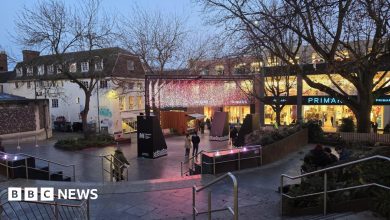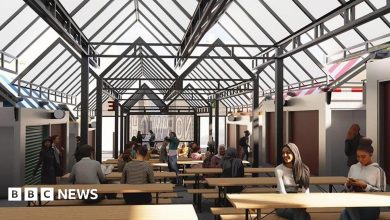Norwich Puppet Theatre cancels show as rain gets onto electrics

Historic St. James’s Church Theatre Battles Weather Woes
In the heart of a historic Grade I-listed building dating back to the 15th and 16th centuries, a charming 150-seat theatre faces an ongoing battle against the elements. St. James’s Church, a structure that has withstood centuries of history, now houses a performance venue that brings arts and culture to the local community. However, this marriage of ancient architecture and modern entertainment comes with significant challenges that test the resilience of those who operate the space.
After recent storms, theatre manager Mr. Beck arrived to discover water had infiltrated critical areas of the building. “We came in and found some of the water has come in backstage and, unfortunately, where our electrics come into the building,” he explained with evident concern. The intrusion of water near electrical systems presents not just an inconvenience but potentially dangerous conditions that must be addressed promptly to ensure the safety of performers and audiences alike. This particular incident is just one example of the ongoing vigilance required to maintain operations in such a historic structure.
The situation represents a persistent worry for the theatre’s management team, who must constantly monitor weather forecasts with apprehension. “It is a real challenge actually and anytime there is some bad weather we are always thinking we are going to find it challenging,” Mr. Beck shared, highlighting the anxiety that accompanies each storm front that passes through the region. This constant state of alert takes an emotional toll on staff who are deeply invested in preserving both the building’s integrity and the theatrical experiences they provide to their patrons.
The theatre’s location within St. James’s Church creates a unique atmosphere for performances that modern venues simply cannot replicate. The centuries-old stone walls, architectural details, and historical ambiance provide an immersive backdrop that enhances productions in ways that contemporary theaters might spend millions trying to achieve. This special environment draws both performers eager to work in such a distinctive space and audiences who appreciate the convergence of history and artistic expression. The intimate 150-seat capacity creates close connections between performers and audiences, fostering memorable theatrical experiences that larger venues often struggle to create.
Balancing preservation requirements for a Grade I-listed building with the practical needs of a modern theatre creates complex challenges beyond weather concerns. Historic building regulations limit the modifications that can be made to improve weatherproofing or update infrastructure. The theatre team must work closely with conservation specialists to find solutions that protect the building’s heritage while allowing it to function as a viable performance venue. These efforts often require creative thinking, specialized expertise, and careful navigation of preservation guidelines that can sometimes conflict with the practical requirements of theatrical production.
Despite these ongoing challenges, the theatre at St. James’s Church represents a remarkable example of adaptive reuse that breathes new life into a historic structure. The determination of Mr. Beck and his team to overcome obstacles posed by the building’s age and susceptibility to weather demonstrates a commitment to both cultural enrichment and historical preservation. Their perseverance ensures that audiences can continue to enjoy performances in a space that connects them to centuries of community heritage while supporting contemporary artistic expression. This delicate balance between honoring the past and embracing the present makes the theatre not just a venue for entertainment, but a living testament to the enduring value of historic spaces in our modern world.








